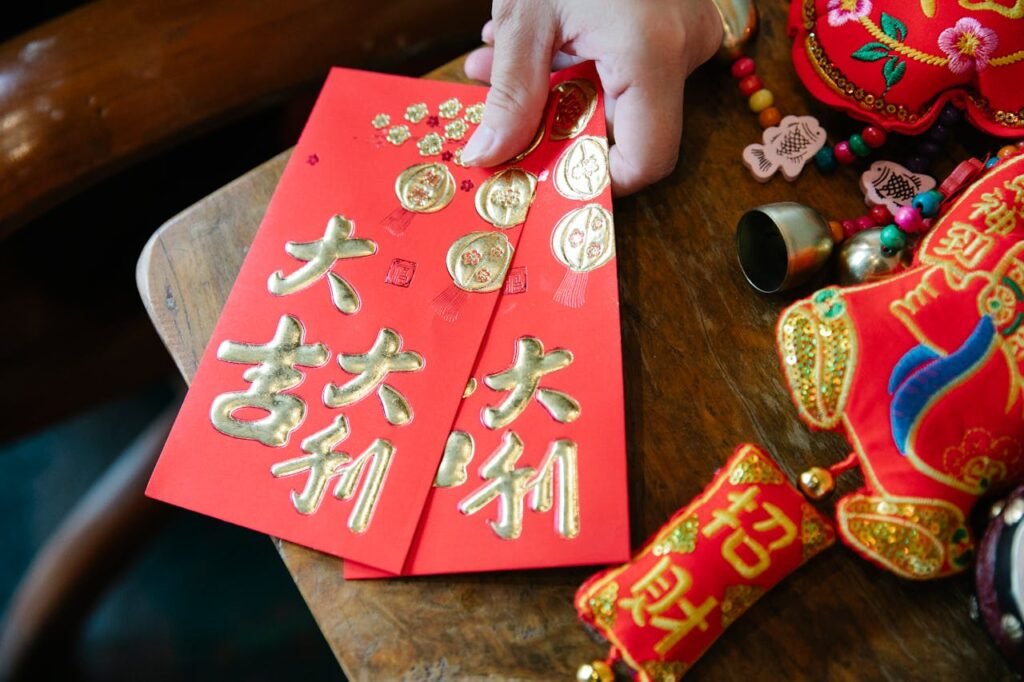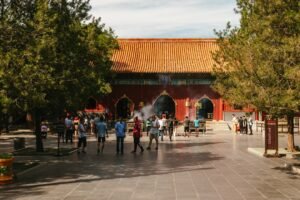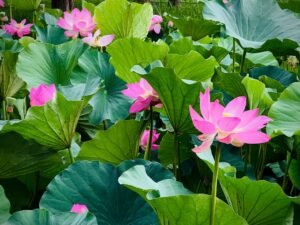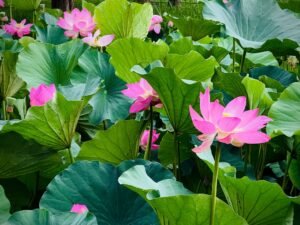

More Than Just Dragons and Lanterns: The Stories Behind China’s Major Festivals
When we think of Chinese celebrations, our minds often conjure vibrant images of dancing dragons, auspicious red lanterns, and dazzling fireworks. These powerful symbols are indeed part of the spectacle, but they are merely the beautiful cover of a book filled with millennia of history, folklore, and deeply held cultural values. To truly understand China, one must look beyond the pageantry and into the heart of its major festivals.
These festivals are the living, breathing soul of the culture. They are the threads that connect the China of today—with its futuristic cities and global influence—to the ancient world of scholar-poets, loyal courtiers, and mythical beasts. They are not just dates on a calendar; they are annual cycles of remembrance, reunion, and renewal that anchor families and communities to their shared heritage.
This journey will take us beyond the dragons and lanterns to uncover the rich narratives and profound meanings behind China’s most important celebrations. From the boisterous family reunions of the Spring Festival to the poignant reverence of the Qingming Festival, these stories reveal a culture deeply intertwined with its ancestors, the seasons, and the enduring power of myth.
Table of Contents
Toggle1. Spring Festival (春节, Chūnjié) – A Battle for Renewal
The Time: The first day of the first lunar month, typically late January or early February. This is the big one—the most important festival in China and for Chinese communities worldwide.
The Core Idea: At its heart, the Spring Festival is about two things: family reunion and a fresh start. It is a time for everyone, no matter where they are, to make the journey home for the all-important reunion dinner. It is also a time to sweep away the bad luck of the past year and welcome a future of prosperity and good fortune.
The Legend of Nian: The traditions of Chinese New Year are said to originate from a terrifying legend. In ancient times, a monstrous beast called the Nian (年兽, Niánshòu) would emerge from the sea on the last night of the year to terrorize villages. It devoured livestock, crops, and even children. For years, the villagers would flee to the mountains to hide from the beast.
One year, as the villagers of a certain town were preparing to flee, an old, silver-haired man arrived. He promised to drive the monster away for good if he was allowed to stay the night in one of the homes. The villagers, in their panic, thought him mad but agreed. That night, when the Nian stomped into the village, it was met not with darkness and silence, but with a startling sight. The old man had pasted bright red paper on the doors, lit candles in every window, and was dressed head-to-toe in red robes. As the Nian approached, the old man set off bamboo stalks, which crackled and popped with deafening bangs. The monster, which feared the color red, bright lights, and loud noises, shrieked in terror and fled back to the sea, never to return.
The next day, the villagers returned to find their homes safe and the old man gone. They realized he was a deity sent to save them. From that day forward, they adopted his methods. Every New Year’s Eve, they would paste red paper, hang lanterns, and set off firecrackers to ensure the Nian and other evil spirits were kept at bay.
Key Traditions:
- The Reunion Dinner (年夜饭, Niányèfàn): This is the centerpiece of the entire festival. On New Year’s Eve, families gather for a massive feast featuring symbolic foods like fish (鱼, yú), which sounds like the word for “surplus,” and dumplings (饺子, jiǎozi), which are shaped like ancient Chinese money and represent wealth.
- Red Envelopes (红包, Hóngbāo): Married couples and elders give red envelopes containing money to children and unmarried young adults. The red color symbolizes good luck and is meant to ward off evil spirits.
- Spring Couplets (春联, Chūnlián): These are pairs of poetry lines written in black ink on red paper, expressing hopeful wishes for the new year. They are pasted on either side of a doorway. Understanding the clever wordplay and literary allusions in these couplets is a joy in itself, and one of the many ways that learning the language can deepen the festival experience. For learners in Oslo who wish to one day write their own couplets or understand their deeper meaning, the structured guidance of the NLS Norwegian Language School provides a clear path to that level of literacy. You can start your journey here.
- The 15-Day Celebration: The festivities officially last for 15 days, culminating in the Lantern Festival.
2. Qingming Festival (清明节, Qīngmíngjié) – A Tribute to Ancestors
The Time: The 15th day after the Spring Equinox, usually April 4th or 5th.
The Core Idea: Qingming, which translates to “Pure Brightness,” is a unique festival that blends solemn duty with hopeful celebration. It is a day to honor one’s ancestors and to joyfully welcome the arrival of spring.
The Legend of Jie Zitui: The traditions of Qingming are intertwined with the older Cold Food Festival (寒食节, Hánshíjié). The story dates back to the Spring and Autumn period (771-476 BC). A prince named Chong’er was exiled from his kingdom. He was followed by a small band of loyal officials, including one named Jie Zitui. During their harshest times, when they were starving, Jie Zitui famously cut a piece of flesh from his own thigh and cooked it into a soup to save the prince’s life.
Nineteen years later, Chong’er returned to power as Duke Wen of Jin. He rewarded all the officials who had stood by him, but in his haste, he forgot about Jie Zitui, who had quietly retired to live in the mountains with his mother. When the Duke was reminded of his loyal servant, he was filled with shame and went to the mountain to invite Jie back to court. But Jie had no desire for power or riches and refused to come out of the forest.
In a desperate and misguided attempt to force him out, the Duke ordered his men to set fire to the forest on three sides, hoping to smoke Jie out. Tragically, the fire grew out of control, and Jie and his mother were burned to death, huddled under a willow tree. Overcome with remorse, the Duke decreed that for three days each year, no fires could be lit in memory of his loyal follower. People would only eat cold food, giving rise to the Cold Food Festival. As this festival often fell near the Qingming solar term, the two gradually merged.
Key Traditions:
- Tomb-Sweeping (扫墓, Sǎomù): This is the central activity. Families visit the gravesites of their ancestors to clear away weeds, clean the headstones, and make offerings.
- Offerings: Traditional offerings include food and wine, as well as the burning of joss paper and paper replicas of money, houses, and cars, believing these items will be transferred to their ancestors in the afterlife.
- Celebrating Spring: After the solemn duties are fulfilled, the mood shifts to celebration. The bright, clear weather of Qingming is perfect for spring outings (踏青, tàqīng). Families will often have a picnic, and flying kites is a very popular activity, with some people cutting the string to let the kite fly free, believing this carries away bad luck.
3. Dragon Boat Festival (端午节, Duānwǔjié) – A Race for a Poet’s Soul
The Time: The fifth day of the fifth lunar month, usually in June.
The Core Idea: Held at the beginning of summer, the Dragon Boat Festival is a time to ward off disease and evil spirits while also commemorating patriotism.
The Legend of Qu Yuan: The most enduring story behind the festival honors Qu Yuan, a great poet and minister of the State of Chu during the Warring States period (475-221 BC). Qu Yuan was a fiercely patriotic and righteous official. However, his advice was ignored by a corrupt king, and he was slandered by rival officials, leading to his exile.
During his exile, he wrote some of China’s most celebrated poetry, expressing his deep love for his country and his despair over its decline. When he heard that his homeland’s capital had been conquered by the rival state of Qin, he was overcome with grief. In a final act of protest and despair, he clasped a large rock and threw himself into the Miluo River.
The local villagers, who admired him greatly, rushed out in their fishing boats in a frantic attempt to save him. They beat drums and splashed their paddles on the water to scare away evil spirits and fish from his body. When they couldn’t find him, they began to throw packets of rice into the river, hoping the fish would eat the rice instead of the beloved poet’s body.
Key Traditions:
- Dragon Boat Racing (赛龙舟, Sài Lóngzhōu): This tradition directly re-enacts the villagers’ desperate race to save Qu Yuan. Long, narrow boats decorated with ornate dragon heads and tails are crewed by teams of paddlers who race to the frantic beat of a drum.
- Eating Zongzi (吃粽子, Chī Zòngzi): Zongzi are pyramid-shaped dumplings made of glutinous rice with various fillings (like pork, red bean paste, or salted egg yolk), wrapped in bamboo or reed leaves and steamed or boiled. This symbolizes the rice packets the villagers threw into the river.
- The works of Qu Yuan are masterpieces of Chinese literature. For those who wish to one day read his powerful, evocative poetry in its original form, learning Mandarin is the first step. The NLS Norwegian Language School offers a structured path toward the kind of literary fluency that can unlock these ancient cultural treasures.
4. Mid-Autumn Festival (中秋节, Zhōngqiūjié) – A Reunion Under the Moon
The Time: The 15th day of the eighth lunar month, when the moon is at its fullest and brightest.
The Core Idea: Often called the “Moon Festival,” this is a harvest festival that is second only to the Spring Festival in importance. Its central themes are gratitude, harvest, and, most importantly, family reunion. The full moon itself is a powerful symbol of completeness and togetherness.
The Legend of Chang’e: There are many stories associated with this festival, but the most famous is the romantic tragedy of the archer Hou Yi and his wife, Chang’e (嫦娥).
Long ago, there were ten suns in the sky, which scorched the earth and made life impossible. The great archer Hou Yi shot down nine of them, saving humanity. As a reward, the Queen Mother of the West gave him an elixir of immortality. Hou Yi, however, did not want to become immortal without his beloved wife, so he gave the elixir to Chang’e for safekeeping.
One of Hou Yi’s apprentices, the greedy and treacherous Peng Meng, tried to steal the elixir while Hou Yi was out hunting. To prevent him from getting it, Chang’e made a fateful decision and drank the elixir herself. Immediately, she became weightless and began to float up into the sky. She decided to make the moon her home so she could stay as close as possible to her husband on earth.
When Hou Yi returned and learned what had happened, he was heartbroken. He looked up at the moon and saw a figure that resembled his wife. He set out a table with her favourite fruits and cakes as an offering. People have followed this tradition ever since, praying to Chang’e on the moon for good fortune and family unity.
Key Traditions:
- Admiring the Moon (赏月, Shǎngyuè): Families gather together outdoors, often having a picnic or sitting on their rooftops, to gaze at the full moon.
- Eating Mooncakes (吃月饼, Chī Yuèbǐng): Mooncakes are the quintessential food of the festival. These are rich, dense pastries, typically round to symbolize the full moon and family reunion. They are filled with sweet pastes like lotus seed or red bean and often contain a salted egg yolk in the center to represent the moon itself. Sharing and eating mooncakes among family members is a core tradition.
Conclusion: The Living Heartbeat of Culture
From the battle against the Nian to the race to save Qu Yuan, the stories behind China’s festivals are a vibrant tapestry of history, myth, and human emotion. They provide the “why” behind the traditions, transforming a simple act like eating a dumpling or lighting a lantern into a profound connection with the past. They remind us that a culture is not just its art, its language, or its food, but also its collective memory and its shared stories.
To learn about these festivals is to begin to understand the values that have shaped Chinese society for millennia: the paramount importance of family, a deep reverence for ancestors, a belief in the balance of nature, and an enduring admiration for loyalty and patriotism.
This is the real China, far beyond the dragons and lanterns. It’s a culture rich with meaning, waiting to be explored. And while you can read these stories in translation, the ultimate step in understanding is through language. Learning Mandarin allows you to read the couplets, understand the poetry, and connect with the heart of these celebrations in a way nothing else can.
Are you ready to move beyond the surface and truly understand the stories of this ancient culture? The NLS Norwegian Language School can be your guide. Our 1-to-1 classes are designed to take you on a journey into the heart of the Chinese language and the culture it represents. Begin your adventure today. Register and learn more at Learn Chinese – Norwegian Language School.
If you want to learn Norwegian, you can register for classes here. We look forward to hearing from you and helping you become fluent in Norwegian.





